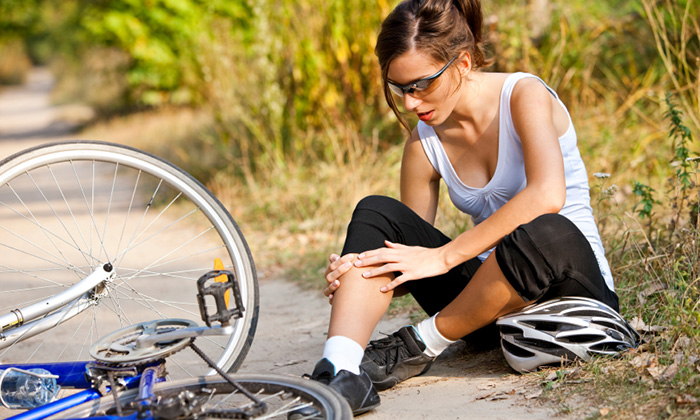First aid for the outdoors

Trekking up a hill, skiing on the slopes or cycling deep in a woodland and an emergency strikes – would you know basic first aid techniques at the time of need in the great outdoors?
Here are some essential first aid procedures to print out and take with you on your next outdoor adventure:
Sprained ankle
If you suspect you or another has sprained their ankle follow the RICE method – Rest, Ice, Compression and Elevation. Ask the person to sit down and elevate the leg on something supportive. Ice probably won’t be easily accessible, so carry Koolpak Instant Ice on every trip. These disposable cold packs turn ice cold in seconds to provide instant treatment! Apply the pack to the affected area, apply pressure and wrap with a bandage or item of clothing.
It is important not to continue walking on a sprained ankle as this could cause further damage to any injured tissues and ligaments.
Chest pains
Chest pains could signal a heart attack, particularly if they are accompanied by pain in the arms, dizziness, sweating and grey-blue lips. If you do suspect a heart attack always call 999. While you wait for help to arrive, ask the person to sit down and ensure their back is supported and knees are bent. Encourage them to breathe gently and slowly and get them to chew an aspirin (if available).
If the individual stops breathing it is important to act fast and begin resuscitation. The resuscitation method recommended by the British Heart Foundation is to hum the Bee Gee’s Stayin’ Alive and pump the patient’s chest to the beat – around 100 to 120 times a minute.
Hypothermia
If you’re not wearing sufficient thermal layers and the wind, rain and cold moves in, your body temperature could drop below 35 C, creating hypothermia. Symptoms include shivering, fatigue, pale skin, blue lips, clumsiness and a weak pulse.
To treat hypothermia and increase an individual’s body temperature, remove any wet clothing and ensure the skin is dried. Put the person in dry, warm clothes, wrap them in a foil blanket and give them a hot drink. Heather or bracken can also be used as insulation. Most importantly, they must be accompanied to the nearest point of warmth and if their symptoms do not improve they should be taken to A&E.
Blisters
For such a small injury blisters can really ruin your time in the outdoors. Blisters can be prevented by wearing a good-fitting pair of hiking boots. You should also protect your leather boots with Nikwax Waterproofing Wax for Leather, which prolongs life and performance of leather footwear and will prevent any water seeping in!
If you do get a blister and it has opened, clean the area with water or an alcohol-free antiseptic wipe to stop infection. Apply a plaster or dressing, blister plasters work best creating a protective coating around the wound and a cushioned pad for comfort.
Breathing difficulties
Someone may find it difficult breathing due to asthma, high altitude or even a panic attack. If it is from asthma, help the person to find their inhaler, sit them down (they must not lie down) and encourage them to breathe deeply and slowly.
A decrease in atmospheric pressure can cause attitude sickness. Usually a good rest will help any breathlessness pass and then you can continue uphill gradually.
If someone is hyperventilating from a panic attack you need to regulate their breathing. Ask them to breathe slowly and deeply into a paper bag and to concentrate on this action, which should divert them from the cause of the attack.

Leave a Reply